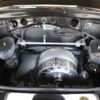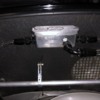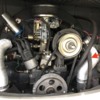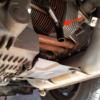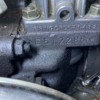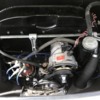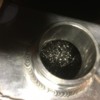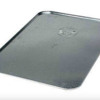I've never been wild about the dump tube, just like I've never been a fan of the slinger and pully-groove instead of a real crankcase seal. It's another example of the Sainted German Engineers running out of time, money, or will to design something well. It's exhibit "A" in the kind of price-point ("value") engineering that occurred in 1930s Germany, in the depths of the depression, under the watchful eye of Her Fuhrer. It's not designed to be the best, or even to work particularly well, just to be cheap and serviceable - kind of like a Model T carburetor and ignition system (which wasn't designed too much before the T1).
I've said before that the entire oil system in a Type 1 looks like it was engineered on a fine fall Friday, when the funding was running out, with Oktoberfest setting up in the square in front of the building where all the engineers were working, while the tubas were tuning up and the Frauleins were setting up the biergarten.
"It'll be fine, Fritz. Let's party".
The crankcases on these engines are so tiny, and the swept area so big, that even a 1776 is likely to create enough crankcase pressure to push oil. Obviously, the answer is a better ring seal in the cylinders, but as they are imperfectly cooled, thin, and cheaply made - it's probably a good idea to run way better rings than most VW guys do.
What should we run? That's the $64K question. There are guys who swear by Total-Seal rings, and guys who swear AT Total-Seal rings. John Connolly likes Deeves rings. I'm trying a Deeves ring set with a Total-Seal second in the 2234 I can't seem to get installed due to trying to build a shop. I'm also trying AA thickwall 92s, which may or may not stay round as they heat up.
Regardless, the higher the compression and the larger the engine, the more crankcase breathing is going to be a consideration. Windage bothered me enough that I went to a dry-sump setup. There are certainly less extreme solutions.
I'm pretty sure @Michael Pickett already knows all of this, and has probably forgotten more than I know anyhow. But for the rest of us poor slobs, a good ring break-in is pretty important. Opinions vary wildly on how to best accomplish this, but choose your favorite folklore and common-knowledge solution, and run with it.





